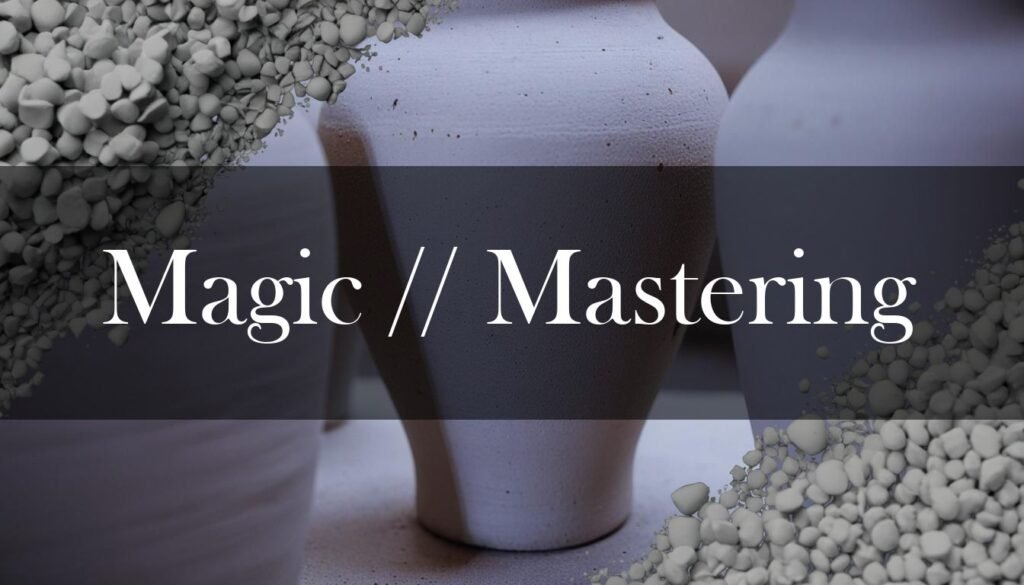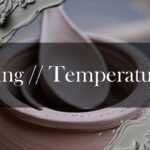Crystalline glazes are a mesmerizing branch of ceramic art, where the alchemy of firing transforms a glossy surface into a landscape of intricate crystal formations. Imagine opening your kiln and finding delicate, snowflake-like patterns blooming across your pottery – that’s the magic of crystalline glazes. These glazes aren’t just a coating; they’re a dynamic, ever-changing artwork shaped by the dance of chemistry and heat.
The secret to these stunning effects lies in the glaze’s unique chemical composition. Think of it as a carefully balanced recipe, where each ingredient plays a crucial role. Silica (SiO₂), the backbone of any glaze, forms the glassy foundation, typically making up 50-60% of the mixture. Alumina (Al₂O₃), in smaller amounts (around 5-10%), acts as a stabilizer, controlling the glaze’s viscosity and preventing it from running too wildly in the kiln. Fluxes like potassium oxide (K₂O), sodium oxide (Na₂O), and calcium oxide (CaO) lower the melting point, ensuring everything fuses together at the right temperature; these generally combine to about 10-15% of the total. But the real star of the show is zinc oxide (ZnO), the nucleating agent that kickstarts crystal growth, comprising about 20-25%. It is this balance that allows the crystals to form (SiO₂), while inhibiting it from flowing too much during firing (Al₂O₃), while the ZnO enables the crystals to form in the first place. Getting the proportions just right is key, as a slight tweak can drastically change the outcome.
Firing schedules are just as critical as the glaze recipe when it comes to crystalline glazes. These schedules involve precise temperature ramps, hold times, and cooling rates. For an electric kiln, a cone 6 crystalline glaze firing might start with a ramp of 100°F per hour to 220°F, then increase to 2000°F at 350°F per hour, followed by a slower climb to 2190°F at 150°F per hour with a 15-minute hold (adjusting to achieve a proper cone 6 bend). The cooling phase is equally important, beginning with a rapid cool down to 1900°F at 500°F per hour, then slowing to 125°F per hour until 1400°F. Gas kilns can follow similar schedules, but may require more manual adjustments. Slow cooling is essential for crystal growth, allowing those beautiful formations to develop over time. Extended holds at specific temperatures further encourage crystal formation. Remember, each kiln is unique, so some experimentation might be needed to dial in the perfect schedule for your setup. A slow-cool firing schedule, for example, would include a slower cooling stage to 1400°F, to really enhance the glaze and encourage crystal growth. Check out this DigitalFire firing schedule for inspiration.
Firing schedules are just as critical as the glaze recipe when it comes to crystalline glazes. These schedules involve precise temperature ramps, hold times, and cooling rates.
Of course, working with crystalline glazes isn’t without its challenges. One common issue is running, where the fluid glaze drips excessively, potentially damaging kiln shelves. Applying thinner glaze layers or using catch basins can help mitigate this. Crawling, where the glaze retracts and leaves bare patches, can be prevented by ensuring the bisque ware is clean and the glaze is evenly applied. Perhaps the most disheartening problem is a lack of crystal growth. This can often be fixed by slowing down the cooling process to give the crystals more time to form, or by slightly adjusting the glaze composition to include more crystal-promoting materials like zinc oxide or titanium dioxide. As with any ceramic process, remember to prioritize safety by using a NIOSH-approved N95 respirator, wearing gloves and eye protection, and ensuring good ventilation when handling glaze materials. Some materials, like zinc oxide and certain metal oxides used for coloring, can be hazardous if inhaled or ingested, so caution is key. By addressing these issues with targeted strategies, potters can enhance the quality and aesthetic appeal of their crystalline glazed ceramics. More glaze fault information can be found at Ceramic Arts Network. You can also learn about different experimental glaze recipes to try out.
Contemporary artists like Morgan Harris, Bill Powell, and Hideaki Miyamura continue to push the boundaries of crystalline glazes, each bringing their unique vision to this art form. Harris focuses on macro-crystalline glazes on classical forms, Powell shares his extensive knowledge and expertise, and Miyamura combines crystallization with iridescence, creating stunning ‘Yohen Crystal Glazes’. Turi Heisselberg Pedersen draws inspiration from geological structures, while Thomas Bothe emphasizes the balance and harmony of form in his crystalline pieces. Their work showcases the endless possibilities of this captivating glazing technique and serves as inspiration for potters looking to explore the world of crystalline glazes. For example, Morgan Harris is a contemporary artist focusing on macro-crystalline glazes on classical forms. Information on the artist can be found at Art Shark. If you are interested in learning more, here is a guide to mastering crystalline glazes.





